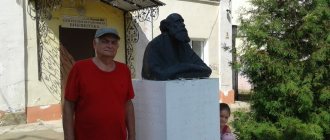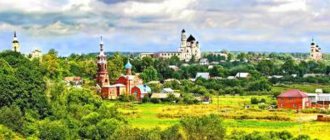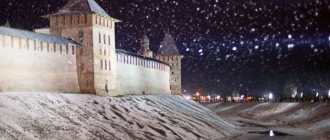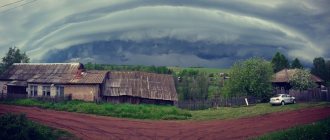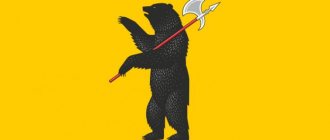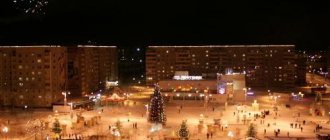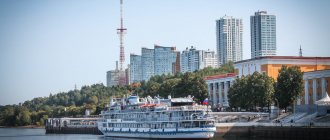Borovsk – a painted city with a Russian soul
Tatyana Afanasyeva
Once I dreamed of a city that looked like a children's coloring book. Colorful, funny and very bright! Everything in it - houses, garages, bridges, fences and even doghouses - was painted. Painted from the heart. Moreover, the doghouses (I bet) were painted by the dogs themselves. And then it turned out that such a city exists. Well, almost like that. This is Borovsk! It is only 169 km from Tula.
Colorful, funny and very bright! Everything in it - houses, garages, bridges, fences and even doghouses - was painted. Painted from the heart. Moreover, the doghouses (I bet) were painted by the dogs themselves. And then it turned out that such a city exists. Well, almost like that. This is Borovsk! It is only 169 km from Tula.
— All the pictures on the houses were painted by one person - Vladimir Ovchinnikov, all the poems for them were written by his wife Elvira. Unusual people. Sentimental, witty and bold.
We visited Borovsk for the first time in 2009, and now we are back in 2020. There are more drawings. I shouldn’t have been afraid that everything was painted over there.
We drove into Borovsk along Kommunisticheskaya Street, and almost immediately we came across a house with a Borovsk globe with all the details.
Everything is marked on it! “A container into which you can throw a bottle with a note; house of creativity not named after Pryanishnikov; a place where the body is washed; a volcano of the people's dormant energy; mirages of destroyed temples; Bonoparte's overnight stay and fiasco; haunted house; the hotel where Kozma Prutkov stayed; temple-garage and temple-water pump..." The list is long and interesting. Unfortunately, it was not possible to comprehend everything.
Next to the globe is a sweet old lady who loves rainwater. I fell in love with her last time 
Photo from 2009.
On the facade of the same house there is the coat of arms of Borovsk (believing heart), noblewoman Morozova (killed to death in the Borovsk fortress in the 17th century), voivode-prince Dmitry Pozharsky and a bunch of other historicisms 
This is the most painted house on Kommunisticheskaya Street. It's faded in places, but it still makes an impression... He's somehow noble.
Photo from 2009.
Opposite the “noble house” is a boy. He is completely naked and white as chalk. In Elvira’s interpretation: “The future is a naked boy. He turns the key in the lock. And the earth flies like a ball. And centuries - all in a fist! The black and white future is sad...
In addition to Kommunisticheskaya Street, I advise you to take a walk along Sovetskaya and Lenin, and then wherever your feet lead you (or Google!). The city is tiny, patriarchal and incredibly soulful.
A separate topic is windows and doors! A variety of characters are frozen in them - from the noblewoman Morozova to “The Absinthe Lover” by Pablo Picasso. Grandmothers, angels, cats, enviable brides, local heroes... Sometimes you look at a house that seems like a home, and then you notice that someone is looking at you from the window without blinking. Picturesque!
...Ovchinnikov is such a patriot. Patriot with a capital P! All his drawings and paintings are the history of the city and its inhabitants.
And this is a self-portrait, as I understand it.
By the way, Vladimir Ovchinnikov is a civil engineer by training, he moved to Borovsk upon retirement and in the early 2000s began to slowly paint the city. Now there are about 100 of his paintings in Borovsk.
I was very impressed by the house where the Polezhaev brothers lived with their wives. It looked like a page from an old photo album.
It looked like a page from an old photo album.
Borovsk surprises with every new turn! “Behind the windows with blooming geraniums, the people who live today are the same as before. Those who have not interrupted the traditions are good: gardeners, with their hands rooted in the ground” (Uh-uh. Chastikova). The woman in the doorway is damn pretty! And the cucumber looks promising.
There is a Tsiolkovsky painting nearby, and a little further there is a monument to the great scientist.
Only in Borovsk could such a monument to Tsiolkovsky be erected. Very sincere! A guy is sitting in a funny coat and felt boots, looking at the sky with special devotion... Without looking up. We also stood nearby, squinting in the sun.
In Borovsk, Tsiolkovsky was considered an eccentric “not of this world.” He came to teach in January 1880, “ended up living with a widower and his daughter who lived on the outskirts of the city,” married this same daughter and stayed in Borovsk for 12 years. Here he began to make bold plans for the conquest of space, first by building a “hawk” out of shit and sticks. The very first house in which he lived in Borovsk still stands on the street. Tsiolkovsky, 49 (formerly Kruglaya).
If you walk from the Tsiolkovsky monument to the right, you will also find Gagarin (Kommunisticheskaya St., 2). The theme of Space is native to Borovsk.
Here's another cool picture, lost in some alley. It's called "Unraveling the World." Vladimir Vysotsky, Sergey Yesenin, AES are participating in the solution. Pushkin, Academician Pavlov, Reverend Paphnutius, presumably Fantômas, and several more characters that I haven’t figured out. But the coolest one here is Tolstoy! Smiled. Very.
It's called "Unraveling the World." Vladimir Vysotsky, Sergey Yesenin, AES are participating in the solution. Pushkin, Academician Pavlov, Reverend Paphnutius, presumably Fantômas, and several more characters that I haven’t figured out. But the coolest one here is Tolstoy! Smiled. Very.
In general, there are plenty of celebrities on the streets of Borovsk...
In the very center of Borovsk there are shopping arcades. Now these are ordinary shops with boring rows. But on their walls, Ovchinnikov painted how it once was... “Ilyicheva Tannery”, “Shustova Cognac”, “Consumer Society Shop”...
Many wooden towers have been preserved in Borovsk. The most famous and most beautiful, according to local residents, is the Shokin Estate of the late 19th century (Lenin St., 15).
Fyodor Ivanovich Shokin was a major Borovsk merchant, a member of the City Duma, a well-known philanthropist in the city, and a builder of Old Believer churches. Currently there is a “School of Masters” in the estate.
The monument to Russian admiral Dmitry Nikolayevich Senyavin, who defeated the Turks in the Battle of Athos and the Dardanelles, stands on Lenin Square. Senyavin was born on the Komlevo estate, Borovsky district, Moscow province.
The sculpture of a girl in a fountain at the intersection of Lenin and Mira streets in the city of Borovsk was called “Let it shine!”
There are several observation platforms in Borovsk, one of them is located at pl. Lenina, 25, the so-called “House of Happiness”.
Even the Pafnutyevo-Borovsky Monastery can be seen.
The monastery was founded by the Monk Paphnutius in 1444. It stands on a hill at the intersection of the Istrema and Protva rivers. It's still ancient! This time we visited, but I remember that in 2009, when we entered the small church of the prophet Elijah, we were greatly surprised by the names of the saints, as they appeared in another dimension: Ezekiel, Joel, Isaiah, Zephaniah... Not a single acquaintance! In the monastery you can climb the bell tower and ring all the bells.
There are about a dozen old churches in Borovsk itself, which makes the city even more patriarchal.
On the way back we stopped at the MuMu Museum of Garbage, because we couldn’t pass by this cow made of plastic bottles. What kind of museum is this? Read the link (there was already a gulbari).
Want to share your “travel stories”? Write in a personal message to Tatyana Afanasyeva And long live our common and endless “Gulbari”!
Gallery
show all photos
Survey
Have you been to Borovsk?
Borovsk or How we got to this life
I really love traveling around Russia. After all, it is known that “we live in the most beautiful country in the world, and all other countries envy us”! Why, our ancestors also advertised the tourism potential of Rus' to the Varangians: “Our land is great and abundant.” More than a thousand years have passed since then, and this catchphrase has not lost any of its relevance. On the contrary, Russia has become even more majestic and even more abundant. And to go around it all - a lifetime is not enough. Just listen to these names - Baikal, Altai, Kamchatka, Northern Urals, Putorana Plateau... All this is as damn beautiful as it is damn far away. And therefore, while I am unable to get out into this beautiful distance, I am slowly exploring the more accessible corners of our vast country - central Russia. And even if it is not as beautiful there as in the above-mentioned locations, it is certainly no less interesting.
In August 2016, my friends and I took a wonderful promenade through the Kaluga, Tula, Lipetsk, Ryazan and Moscow regions (and along the way we also stopped in Leningrad, Novgorod and Tver in transit). And if my capital traveler friends have long traveled all the most intimate corners of the above regions due to their small distance from Moscow (ha, but for us it’s a stone’s throw to Karelia, Finland and Estonia!), for us this trip became a real adventure.
I am now starting to publish articles from the “Summer Promenade” series, and my first report is about the city of Borovsk, Kaluga Region. Go!
The hassle before starting a trip is always pleasant. It’s like preparing for the New Year, an endless series of small tasks - buy groceries for the road, stop by Decathlon for all sorts of little things, pack the necessary clothes into your bag, check your camping equipment, upload maps, legends and other useful information to your phone, check the technical the condition of the car - it seems like a little bit of everything, but the whole day ends up going away.
It's Friday evening. It’s high time to hit the road, but someone is still sitting at work, and someone is even stuck in traffic jams on the other side of the city. In general, as usual, the start of the journey does not go well. Finally, a couple of hours later, everyone gathers in my yard. Here another problem arises - there are usually about twice as many things as my trunk can hold, so I have to do a quick inventory right there on the asphalt. After another hour, we still manage to cram the unfitting stuff into the car, after which we joyfully jump out onto the Moscow Highway. And we immediately get stuck in a dead traffic jam. Hello Friday!
It becomes more or less free only somewhere in the Lyuban area. We make ourselves comfortable on leather chairs and, accompanied by the quiet rumbling of a diesel engine, rush into the thick darkness of the August night. The odometer steadily counts down the kilometers left behind, we chat about this and that, half-dead roadside villages run towards us one after another. Today the Rossiya highway is in excellent condition. I remember with horror my previous trips along this road, when in some places the side of the road was better than the asphalt riddled with potholes. In general, these days there is complete order with federal highways in almost the entire European part of Russia. Still, not all petrodollars disappeared without a trace in offshore companies; a little bit was spent for the benefit of the country.
It was about two o'clock in the morning when we reached Valdai. Having left the highway and wandered a little along the night dirt roads, we entered the territory of the Valdai National Park and turned into the first clearing we came across, where in just five minutes we set up tents and fell asleep.
At exactly 7 am the alarm clock cheerfully informed me of the start of a new day. I immediately began to convey this wonderful news to the rest of the expedition members. The first morning on a trip is always the hardest: there is no discipline, no one wants to wake up.
Somehow, in about 15 minutes, I still managed to push everyone away. Light breakfast with a view of Lake Boroe, quick preparations, and then on the road.
Whether long or short, close or far, we drove into Klin. Here the main part of our journey began, and here we were supposed to return after 9 days and 2650 kilometers. But the first point of our program is not Klin at all, but Borovsk. Another hundred and fifty kilometers and we are there.
Borovsk is an ancient Russian city. Officially, the first written mentions of it date back only to the 14th century, although by that time the settlement had already existed for several centuries. In the XIV-XV centuries, Borovsk was one of the important centers of the Serpukhov-Borovsky principality that existed in those years.
In the 16th century, Archpriest Avvakum was exiled here, and in the earthen prison in the Borovsky prison they kept the noblewoman Morozova and her sister Princess Urusova, who died there of hunger. From this moment until the revolution itself, Borovsk is considered one of the centers of Russian Old Believers.
It is also known that Napoleon stayed in the city in October 1812, and it was here that he decided on the final retreat of the French army.
In general, during the Russian Empire it was quite fun in Borovsk. The daughter of Konstantin Tsiolkovsky, who lived here in 1880–1892, wrote the following about the city in her memoirs:
Morals in Borovsk were wild; fist violence and the rule of the might often reigned on the streets. There were three chapels in the city of different faiths. Often members of the same family belonged to different sects and ate from different dishes. At holidays, during weddings, the rich rode dashingly on trotters, paraded around the city with some bride's dowry, right down to feather beds, buffets, geese and roosters, and wild drinking and parties were held. The schismatics fought with other sects.
Nowadays, everything is different. If you describe today's Borovsk in one phrase, you'll get something like this.
On the one hand, there is an ordinary Russian province, quiet and sweet.
Hills (and this immediately adds a hundred to the city’s charm), wooden houses, a small overgrown Protva river and an Old Believer church, which was turned into a house of culture in the Soviet years, and into an arts center in the post-Soviet years.
In some places there are old rusty signs with street names.
And street water pumps. In general, romance! And all this happiness is some 90 kilometers from the Moscow Ring Road.
What else? The surrounding fields, the view of which opens directly from the city center.
Yes, bronze Konstantin Tsiolkovsky in shorts and felt boots, looking thoughtfully at the sky.
And here we could have put an end to it if civil engineer Vladimir Ovchinnikov had not come to Borovsk in the late 90s, who for almost 15 years has been methodically decorating the walls of the city with his frescoes. At the same time, he does not know how to draw, from the word “at all,” but this small flaw does not bother the master at all.
It’s best to start getting acquainted with Borov’s masterpieces with a map kindly drawn by the author, where all his creations are marked.
The map is part of a large fresco - "Globe of Borovsk". You can look at it for as long as the creations of the Renaissance masters. Here you can find various characters, one way or another connected with the history of the city: archpriest Avvakum, Tsiolkovsky, Pushkin, mathematician Pafnuty Chebyshev, Kozma Prutkov (what does he have to do with it - I still don’t understand), and Ovchinnikov himself.
Some of the frescoes are accompanied by poems by the poetess Elvira Chastikova, who is also the artist’s wife. Her talent for weaving rhymes is even more terrible than her husband's work.
But minus for minus gives a plus, and the resulting cocktail of frescoes and poems, spilled onto the streets of Borovsk, is certainly a masterpiece.
The most famous house in Borovsk is number 1 on Kommunsticheskaya Street. Just at one of its ends the “Borovsk Globe” is located.
The building is painted in a circle. But the most crazy thing is on the inside. Damn, this is brilliant!
Not everyone shares Ovchinnikov’s love for street art, and some of his creations are deliberately destroyed.
Although, in truth, these frescoes are the main highlight of Borovsk.
They have long been part of the local urban landscape. And they habitually look at inquisitive travelers from the old gates and from the empty eye sockets of the windows.
Well, it's beautiful!
"Sailor" on the wall of the local sewage pumping station.
"Etymology of Borovsk". Two versions of the origin of the city's name are depicted here. The first is in honor of the boar (in a letter to one of his friends, Alexander Pushkin called this place a “pig town”; it was for this reason that the great Russian poet found himself among other heroes decorating local frescoes, although he himself had never been to Borovsk in his life). Another version claims that the name of the city comes from a local forest. And although both options are clearly far-fetched, the first of them is still more similar to the truth.
"Artists of Borovsk".
"Tea Party."
"Uspenskaya Street at the beginning of the twentieth century."
And finally, the master himself at work.
The photo shows the creation of the fresco “Gulag Archipelago”, which depicts the author of the work of the same name, Alexander Solzhenitsyn, as well as twenty portraits of residents of the Borovsky district executed during the Great Terror.
This is Ovchinnikov’s second attempt to immortalize the residents of Borovsk who suffered from Stalin’s repressions. The first was in August 2015, then the fresco “For Whom the Borovsk Bells Ring” was created, which depicted 18 portraits of those repressed. That creation lasted only a month and a half, after which it was destroyed by local vandals.
The fresco “Gulag Archipelago” was not destined to survive even a day. Ovchinnikov finished his work on August 16, three days after our visit to Borovsk. In the evening of the same day, the work was defaced by some kind of cattle - vandals painted over the faces and names of the victims of the Stalinist regime, and on the forehead of the Nobel Prize laureate in literature they wrote a famous three-letter word. The result is in the photo sent to me by one of the readers.
What else is there in Borovsk? Dull Soviet architecture.
And cheerful.
Nice provincial architecture - ancient and not so ancient.
Old houses with elegant wooden frames framing ugly plastic windows.
No, but what! Plastic windows, an absurd second floor and a blank fence made of corrugated sheets - you can immediately see: life is good!
Here it may seem that all is lost. But no! One has only to take a closer look, and it becomes clear that there is still hope.
Don't switch!
Continuation: Abandoned Dol "Kaverino"
